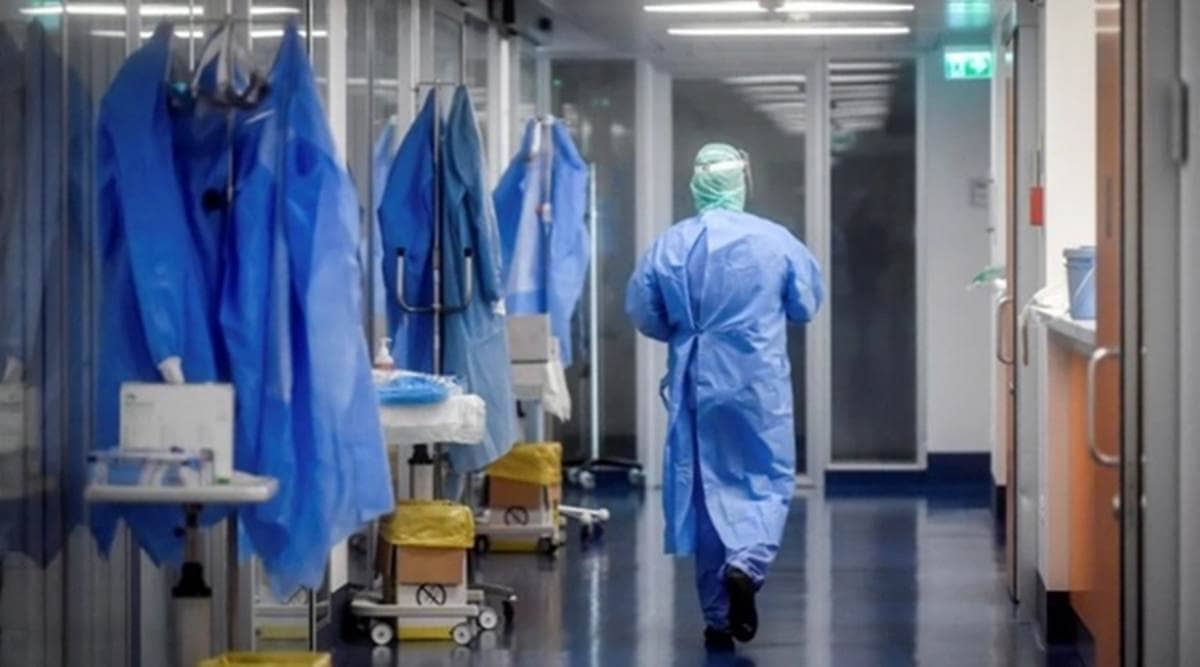 It sought directions to the state government to take immediate steps to appoint adequate and required medical and para-medical staff to cope with Covid-19 situation in Ratnagiri district and other government hospitals in Maharashtra. (Representational)
It sought directions to the state government to take immediate steps to appoint adequate and required medical and para-medical staff to cope with Covid-19 situation in Ratnagiri district and other government hospitals in Maharashtra. (Representational)Containment, contact tracing, and surveillance are the “most effective weapons” in the battle against Covid-19, Prime Minister Narendra Modi on Tuesday said to the chief ministers of 10 states that are currently the worst affected by the pandemic.
The Prime Minister urged the chief ministers to follow the mantra of testing and tracing all those who have come in contact with an infected individual within 72 hours.
The 10 states — Andhra Pradesh, Karnataka, Tamil Nadu, West Bengal, Maharashtra, Punjab, Bihar, Gujarat, Telangana, and Uttar Pradesh – account for almost 80 per cent of India’s current active caseload.
Modi told the chief ministers in the video conference on Tuesday that they should set themselves the target of bringing the fatality rate in their states to under 1 per cent.
Fatality rate is the ratio of deaths to positive cases, expressed as percentage. India’s national case fatality ratio (CFR) fell to 1.99% on Tuesday, the lowest since the beginning of the national lockdown in March.
If the “virus is defeated in these 10 states, the entire country will emerge victorious in the battle against Covid-19,” the Prime Minister said.
He said there was an “urgent need to ramp up testing” in Bihar, Gujarat, Uttar Pradesh, West Bengal, and Telangana.
“…In the states where the testing rate is low, and where the positivity rate is high, there is a need to increase testing – in particular, Bihar, Gujarat, UP, West Bengal, and Telangana, after giving special emphasis on increasing testing,” the Prime Minister said.
Positivity rate, also expressed in per cent, is the number of people detected positive against the number of those tested. Positivity is an indicator of how widespread the disease is.
“…Testing has reached 7 lakh every day and is increasing continuously… We are seeing the results, which are helping us to identify and prevent infection. The average fatality rate in our country was very low compared to the world even earlier; it is a matter of satisfaction that it is constantly decreasing,” the Prime Minister said.
“…And as we continue to increase testing, our success will be even greater. We will feel a sense of satisfaction if we try to bring the fatality rate below 1 per cent; if we try a little more, and with greater focus, we can achieve that goal, too. Also, there is a lot of clarity about what we have to do and how to progress,” he said.
Modi told the states that “experts are now saying that if we identify cases within 72 hours of onset, then this infection slows down to a great extent”. Therefore, “containment, contact tracing, and surveillance” should be followed “like a mantra, with the same earnestness as washing hands, social distancing, and wearing masks”, he said.
The PM asked the states to share their best practices and new initiatives, and recounted the experience of the national capital region (NCR) in tackling the surge of cases. The roadmap prepared under the leadership of Home Minister Amit Shah was based on the strategy of segregation of containment zones and screening of the population, specifically those in the high-risk category, he said.
“…(If) we move forward in a systematic way, we can turn things in our direction in a week or 10 days; we have experienced this… Completely isolating the containment zones and 100 per cent screening should be undertaken. Today, the result of these efforts is in front of us. Also, better management in hospitals, increasing the number of ICU beds, have also helped a lot,” the Prime Minister said.
The chief ministers provided feedback on the ground situation in their states, and requested guidance from the Union Health Ministry on conducting serological surveillance. The Prime Minister underlined the importance of regular meetings to discuss the response to the pandemic.
“After talking to you, I get more comprehensive information about the ground reality, and it also shows that we are moving in the right direction,” he said. “It is also important to constantly meet and hold discussions because as the corona epidemic progresses, it is giving rise to new circumstances.”
Also present at the meeting were the Defence Minister, Finance Minister, Health Minister, and the MoS, Home Affairs. Health Secretary Rajesh Bhushan, who too attended, emphasised “the need for reporting accurate mortality figures”.